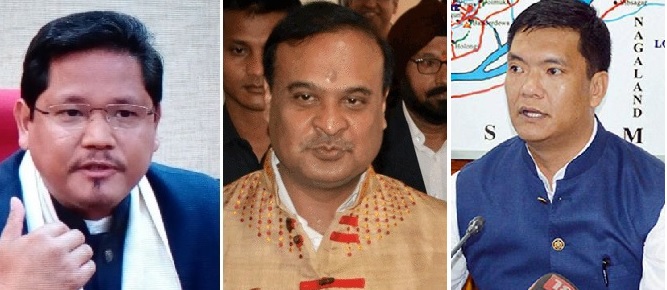

Citizenship bill protests fail to make difference in Assam, rest of Northeast

As the election scoreboard started showing early leads for the BJP and its allies in Assam, Himanta Biswa Sarma – the man behind BJP’s turnaround in the region – told a TV channel how the contentious Citizenship (Amendment) Bill ‘greatly helped’ his party.
Sarma couldn’t have been more honest. The opposition over the proposed bill – which initially triggered large-scale protests across the Northeast just months ahead of the Lok Sabha elections – suddenly waned once the polls drew nearer. In fact, BJP’s alliance partner Asom Gana Parishad, which had walked out of the coalition over the bill, revived its ties with the saffron party to jointly fight the parliamentary elections. But it wasn’t the AGP’s return that the BJP was rejoicing. The party and its strategists knew the bill had served the purpose with which it was being proposed – dividing an already disunited people in Assam. The bill – even though was passed in the Lok Sabha in January — lapsed after the central government failed to pass it in the Rajya Sabha during the last Parliament session.
If the 2014 election was about driving out illegal immigrants from Assam, the BJP made 2019 polls about giving citizenship to Hindu immigrants. The BJP, which came to power in the state in 2016 Assembly elections, proposed the Citizenship (Amendment) Bill that intends to amend the Citizenship Act, 1955, to grant Indian citizenship to non-Muslims from Bangladesh, Pakistan and Afghanistan on the grounds of religious persecution.
Clearly, the overwhelming sentiments against the proposed citizenship bill couldn’t drown the popular politics of the BJP. Today’s results also go on to show that with the citizenship bill, the BJP has succeeded in giving a new colour to the decades-long anti-immigrant movement in the state.
By proposing to grant citizenship to Hindu Bangladeshis, the BJP consolidated the Hindu vote on one hand and divided the Muslim vote (on liguistic lines between Assamese and Bengalis) on the other. Also, by terming only the Bengali-speaking Muslims as outsiders, it has pushed the traditional voter base of the Congress and the All India United Democratic Front (AIUDF) to a corner. Of course, this has also made the Bengali Hindus a strong vote bank in the state.
How BJP started and where it has reached
Collectively, the eight states of the region send 25 members of Parliament, out of which Assam sends 14, followed by two each from Arunachal Pradesh, Meghalaya, Tripura and Manipur and one each from Sikkim, Nagaland and Mizoram. The elections were held in the states in the first three phases out of the seven.
When the Modi government came to power at the Centre back in 2014, the Congress was ruling five of the eight states in the Northeast. Five years later, the Congress stands wiped out from the region with its last bastion — Mizoram — too lost in the Assembly elections in December 2018.
With the 2019 Lok Sabha elections results out, the BJP is likely to only strengthen its grip over the region.
Result trends
Assam (14 seats)
Leading: BJP 8, Congress 2, others 4
Meghalaya (2 seats)
Leading: Congress 1, National People’s Party (NPP) 1
Arunachal Pradesh (2 seats)
Leading: BJP 2
Manipur (2 seats)
Leading: BJP 1, Naga People’s front (NPF) 1
Mizoram (1 seat)
Leading: Mizo National Front (MNF)
Tripura (2 seats)
Leading: BJP
Nagaland (1 seat)
Leading: Congress
Sikkim (1 seat)
Leading: Sikkim Krantikari Morcha (SKM)
Assembly polls
Arunachal Pradesh (60 seats)
Leading: BJP 22, Congress 2, others 7
Sikkim (32 seats)
Leading: SDF 5, others 9, Congress 0, BJP 0


